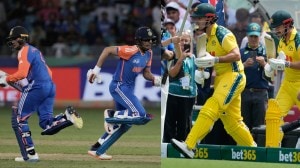‘KGB paid Congress, CPI, media’
One year after he died, the ghost of Vasili Mitrokhin, former senior archivist at the KGB, has returned to haunt the core of the UPA—th...

One year after he died, the ghost of Vasili Mitrokhin, former senior archivist at the KGB, has returned to haunt the core of the UPA—the Congress and the Communists.
Just released in London, The Mitrokhin Archive II: The KGB and the World (Penguin/Allen Lane) claims fairly sensational disclosures about the former Soviet secret service’s operations in India.
The KGB, the book alleges, routinely bribed Left and Congress politicians, including ministers in Indira Gandhi’s government, bought secrets from them, paid them retainers. Making India, in the words of KGB general Olef Kalugnin, “a model of KGB infiltration of a Third World government…It seemed like the entire country was for sale”.
Mitrokhin defected to Britain in 1992, carrying with him classified material, later described by the FBI as “the most complete and extensive intelligence ever received from any source”.
He then collaborated with Christopher Andrew—historian at Corpus Christi College, Cambridge, and considered an authority on espionage—to produce The Mitrokhin Archive (1999), which dealt with the KGB network in the West. The successor volume deals with the developing world.
The new book devotes two chapters to India. “The openness of India’s democracy,” the books claims, “combined with streak of corruption which through its media and political system provided numerous opportunities for Soviet intelligence.”
Dirty tricks helped: “The Indian embassy in Moscow was being penetrated by the KGB, using its usual varieties of the honey trap. The Indian diplomat PROKHOR was recruited, probably in the early 1950s, with the help of a female swallow, codenamed NEVEROVA, who presumably seduced him. The KGB was clearly pleased with the material which PROKHOR provided, which included on two occasions the embassy codebook and deciphering tables, since in 1954 it increased his monthly payments from 1,000 to 4,000 rupees” (page 313).
PROKHOR is not identified.
Indira Gandhi—”VANO” in KGB parlance—figures prominently. The KGB orchestrated her welcome to the Soviet Union in 1953: “As well as keeping her under continuous surveillance, the Second Chief Directorate also surrounded her with handsome, attentive male admirers.”
“During 1975,” pages 328-9 say, “a total of 10.6 million rubles was spent on active measures in India designed to strengthen support for Mrs Gandhi and undermine her political opponents.”
In 1977, “files noted by Mitrokhin also identify by name 21 of the non-Communist politicians (four of them ministers) whose election campaigns were subsidised by the KGB.”
|
Cong paid through L N Mishra, says book;
brother says concocted |
|||||
|
• Mitrokhin Archive: Money was paid to the Congress through conduits like L N Mishra. After Mishra’s assassination, KGB “gave his widow Rs 70,000”. Story continues below this ad |
|||||
The CPI was funded in many ways, including transfer of money through car windows on Delhi roads: “(C.) Rajeshwar Rao, general secretary of the CPI from 1964 to 1990, subsequently provided receipts for the sums received.”
Then there was the infamous rupee-ruble trade: “In 1959, the CPI general secretary, Ajoy Ghosh, agreed on plans to found an import-export business for trade with the Soviet bloc, headed by a senior Party member codenamed DED…Within little more than a decade its annual profits had grown to over 3 million rupees.”
As per the book, V K Krishna Menon, as defence minister, was persuaded to buy Soviet MiGs and not British Lightnings, his election campaigns in 1962 and 1967 were KGB funded.
Soviet-phobes like veteran Congressman S K Patil were “discredited” by a “forged letter from the US consul-general in Bombay referring to Patil”. By 1973, the KGB had “10 Indian newspapers on its payroll as a well as a press agency”. “During 1972 the KGB claimed to have planted 3,789 articles in Indian newspapers—4,486 in 1974 and 5,510 in 1975”.
Delhi became a prized posting, “indicated by the subsequent promotion of some of the leading officers in the New Delhi residency”. One 1970s KGB man in Delhi went on to “become head of the post-Soviet foreign intelligence service, the SVR, with direct access to President Yeltsin”.
Later, he “became a confidant of President Putin”. Vyacheslav Trubnikov returned to India as ambassador in 2004, an act “attributed by Russian press commentators to the mutual desire of Russia and India to upgrade their strategic partnership”.
For him, this book will probably be a nostalgia trip.



- 01
- 02
- 03
- 04
- 05




























